Table of contents
The leaves of the bay laurel ( Laurus nobilis ) are often used to season sauces, stews and braised dishes.
Use in the kitchen
Traditionally, it is used to season hearty dishes with a strong flavour and as a green for vegetable broth . Bay leaves are used for dark gravies , sauerkraut, red cabbage , tomato sauce (gravy), goulash and in hearty bean and lentil stews. It is also very popular in Indian dishes, e.g. for Rogan Bosh or Makhani sauce with Garam Masala .
The aromatically scented bay leaves can be used fresh or dried. They have a piquant, spicy aroma with a slight bitter note. Some compare the aroma to cinnamon and nutmeg .
The bitter substances are more noticeable when fresh than when dried. Due to its strong flavor, it should only be used sparingly. Usually 1 leaf per dish is enough. The flavor of the dried bay leaf is slowly absorbed into the dish, which is why it needs a long cooking time. Before serving, the hard leaf should be removed. It is not poisonous, but can get stuck in the throat or digestive tract because it is still very tough even after long cooking. You can also use bay leaf powder to season dishes, which is easier to dose. Bay leaves are also occasionally found in herbes de Provence mixtures .
Bay leaves can also be used to make flavored vinegar. To make this, mix 2 to 3 bay leaves and 1 teaspoon ofblack peppercorns with half a liter of white or red wine vinegar.
Vegan recipe for bay leaf baked potatoes
Ingredients (for 4 people): 16 small potatoes , 16 bay leaves, 4 tablespoons rapeseed oil , salt ,black pepper .
Preparation: Wash the potatoes and clean the skin with a vegetable brush if necessary. Dry the potatoes on a clean kitchen towel and make a deep cut lengthwise. Place a bay leaf in each cut. Brush the potatoes with oil and season with salt and pepper. Roast the potatoes in the oven at 180 °C for around 45 to 50 minutes until golden brown. Remove the bay leaves before eating.
Tea preparation
To prepare bay leaf tea, pour 250 ml of boiling water over two dried bay leaves and let it steep for about 10 minutes. Then strain and sweeten with agave syrup if necessary.
Vegan recipes with bay leaves can be found under the note: " Recipes that have the most of this ingredient ".
| Not only vegans or vegetarians should read this: Vegans often eat unhealthily. Avoidable nutritional mistakes . |
Purchasing - Storage
Fresh, raw bay leaves are only occasionally available as fresh bunches, most likely at the local weekly market, directly from the farmer or via a subscription box (green box, seasonal box).
Dried bay leaves can be found at major retailers such as Coop , Migros , Denner , Volg , Spar , Aldi , Lidl , Rewe , Edeka , Hofer , Billa , sometimes even in organic quality. Organic supermarkets such as Denn's Biomarkt and Alnatura definitely offer organic bay leaves. Bay powder can sometimes be bought in health food stores or from spice retailers. Dried bay leaves are rarely "raw" in the sense of raw food quality.
The availability of bay leaves varies depending on the size of the store, catchment area, etc. If you are interested, click on our recorded food prices for the DA-CH countries (above under the ingredient image). There you will find current prices from various supermarkets and their price development.
Storage tips
Fresh leaves will keep for a few weeks in the fridge if wrapped in a damp cloth. Dried bay leaves should be stored in an airtight, dark and dry place, as should the powder.
Ingredients - Nutritional values - Calories
Here we realistically show you the ingredients of spices and herbs per 1 g (instead of per 100 g as usual).
1 g of bay leaf contains 3.13 kcal. It mainly contains carbohydrates (0.75 g/1g) and fiber (0.26 g/1g). Bay leaves contain little fat and little protein. 1
Do bay leaves contain iron? In addition to iron , bay leaves contain large amounts of manganese and vitamin B 6 (pyridoxine) . 1 However, because the amount consumed is so small, they and the macronutrients do not contribute significantly to meeting the daily requirement. The secondary plant substances in this ingredient are far more important for the health value. Since all herbs contain many health-promoting ingredients, we deliberately avoid the term superfood here.
The complete ingredients of bay leaves, the coverage of the daily requirement and comparison values with other ingredients can be found in our nutrient tables. In the article Nutrients explained you will get a detailed insight into the topic.
Health effects
Are bay leaves healthy? Like other herbs and spices, bay leaves contain secondary plant substances. Depending on the variety and growing area, bay leaves can have different concentrations of phenolic acids. Greek leaves mainly contain kaempferol and apigenin, and Georgian leaves contain luteolin and kaempferol. Their essential oil (bay oil) shows an antimycotic effect against certain pathogenic microorganisms in vitro . 12
Studies show that daily consumption of bay leaf tea (bay tea) made from dried bay leaves had a positive effect on blood lipid profiles in healthy volunteers. Blood sugar, total cholesterol, triglycerides and LDL cholesterol levels did not decrease significantly, but a significant increase in HDL cholesterol was measured. This can help reduce the risk of cardiovascular disease. 10 Significant studies with a longer treatment period and a larger number of volunteers on the effect of bay leaf tea are still pending.
A study of patients with type 2 diabetes found that daily intake of 1 to 3 g of bay leaf powder reduced fasting glucose levels. It also reduced total cholesterol levels, with LDL cholesterol ("bad cholesterol") decreasing and HDL cholesterol ("good cholesterol") increasing. The results suggest that bay leaves reduce risk factors for diabetes and cardiovascular disease and may be beneficial for people with type 2 diabetes. 16
Are bay leaves good for losing weight? Studies show that essential oils from bay leaves also affect fat metabolism in the liver and inhibit the enzymes responsible for the metabolism of carbohydrates in the digestive tract, which led to weight loss in rats. It is believed that essential oils have a similar positive effect on humans. 18 However, when losing weight, it is important to change your diet, which leads to long-term weight loss and a constant weight. You can find more information on this topic in " Lose weight healthily and permanently ".
Dangers - Intolerances - Side effects
Bay leaves should be removed from food before consumption. If swallowed accidentally, they can get stuck in the throat. 5 They can also get stuck in the stomach or intestines and cause inflammation and bleeding. 4
In rare cases, the consumption of food seasoned with bay leaves can trigger allergies in sensitized people. 6 An allergic reaction caused by inhaling the scent of herbs is just as rare. There is a documented case of a man who developed occupational asthma as a result of inhaling the smell of aromatic herbs, including bay leaves, on a daily basis. 3 Allergic contact dermatitis caused by bay oil is much more frequently documented. This was occasionally used as a massage oil 7 , or it was previously used as a home remedy to relieve rheumatic complaints or lipomas. 8
The cause of the allergic reaction is the sesquiterpene lactone ingredients of the laurel. Cross-reactions can occur with plants from the daisy family (Asteraceae or Compositae), which also contain sesquiterpene lactone. Possible cross-reactions can occur with chamomile, yarrow, wormwood, even lettuce, endive, chicory and sunflower seeds. 8
Bay leaves can be contaminated with polycyclic aromatic hydrocarbons (PAHs), which are carcinogenic and mutagenic. PAHs are formed when organic material is heated and can therefore be formed when dried with an open flame or smoke gases (smoking). This practice can also be recognized by the untypically charred leaves. 17 The measured values were in some cases far above the already relatively high PAH limit. 15,17
Risk of confusion
The real bay laurel is not poisonous. However, there are similar-looking plant species whose consumption poses health risks. The leaves of the cherry laurel (cherry laurel) resemble bay leaves. However, the entire plant is poisonous. 11
Folk medicine - natural medicine
Bay oil (Oleaum lauri) is used exclusively externally. It is said to stimulate circulation and has antiseptic properties. The oil is used against ulcers, swellings, skin rashes, muscle pain, strains and sprains, and as a massage oil. In veterinary medicine, it is a component of the so-called udder ointment, which is used against inflammation of the cow's udder. 9 However, there are no scientific studies on its effectiveness. The German Pharmacopoeia also warns of its skin-irritating and sensitizing effects. 8 The oil can lead to severe allergic reactions.
Ecological footprint - animal welfare
The ecological footprint of a food depends on various factors. The type of agricultural production (conventional vs. organic), seasonal, regional or domestic production or import by truck, ship or plane, different types of packaging and whether the goods are fresh or frozen play a decisive role. 14 Despite extensive research, however, we were unable to find any precise information on the CO 2 footprint of bay laurel.
In general, spices require about 7000 liters of water per kg, compared to significantly less for vegetables with 300 l/kg and grains with 1600 l/kg. 19
There are initiatives and labels for spices such as SSI ( Sustainable Spices Initiative ) or NSSP ( National Sustainable Spice Program ) that promise certain sustainability standards. But Rainforest Alliance and UEBT ( Union for Ethical Biotrade ) also have programs that bring the cultivation of herbs and spices onto a sustainable track through certain supply chain management and certification systems. In addition to preserving biodiversity in the countries where the spices are grown, workers' rights are also secured. Standards for farms and supply chains should take into account the sustainable aspects of production and trade. However, the extent of implementation varies greatly from organization to organization. 20
In conventional agriculture , synthetic herbicides and pesticides are often used to protect against unwanted plants and insects. However, these are not only proven to harm the environment, but can also have direct negative effects on people. Often, residues of the pesticides used during cultivation can still be found in the end product. Ideally, you should buy herbs and spices from organic farming or grow them yourself, which also saves unnecessary packaging and transport and the associated emissions.
Worldwide occurrence - cultivation
The true laurel originally comes from Asia Minor. Today it grows wild and is cultivated throughout the Mediterranean region, in subtropical regions of Russia, and in Central and South America. 9
Wild laurel prefers warm, moist river beds. Larger areas are cultivated in Georgia, Israel and along the Black Sea coast. 2 There are also larger areas cultivated in Turkey, Portugal, Spain and Iran. 12
Cultivation - Harvesting
Laurel needs a sunny and warm location. It is therefore not suitable for beds in this country, as it is very sensitive to frost. However, growing in pots is possible and preferable. It is important that the pot contains a substrate with sand and is slightly permeable to water. Propagation is usually done via cuttings. Sowing is also possible, but only with fresh seeds that are only a few days old. The laurel should be overwintered in a frost-free but bright location. Regular watering and repotting every two years with lightly fertilized substrate promotes growth. 13
The leaves of the bay laurel are harvested when they are young but fully developed. When dried, the leaves have a long shelf life. Leaves that have been eaten by insects should not be used for storage. The fatty laurel oil is pressed from the fruit. 9
Further information
Bay laurel ( Laurus nobilis ) is a species of plant in the genus Laurus within the family Lauraceae. It is an evergreen shrub or tree with glossy leaves.
Laurel wreaths are considered a special award and are a symbol of fame, victory and peace. In the Roman Empire, successful generals wore a laurel wreath as an award on their triumphal processions and later also the Roman emperors.
Alternative names
Real laurel is also called noble laurel or spice laurel. The common name is Daphne. This is due to the Greek myth of the nymph Daphne, who turned herself into a laurel bush to escape the god Apollo.
The English names for bay laurel are bay laurel, sweet bay, true laurel, Graecian laurel. The spice is known as bay leaves. Less commonly, they are called laurel leaves.
Other applications
In the cosmetics industry, laurel oil is used to make perfume and soap. 2

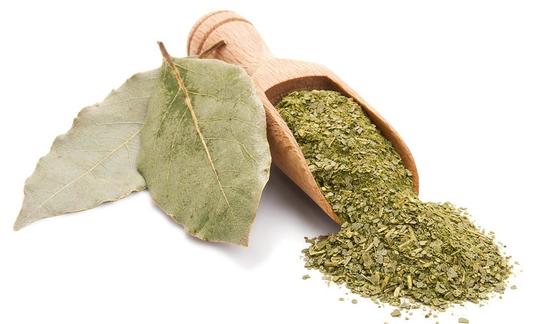

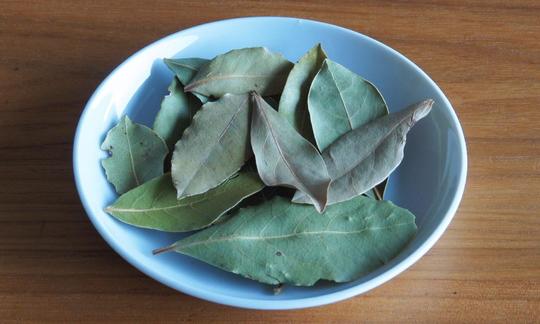

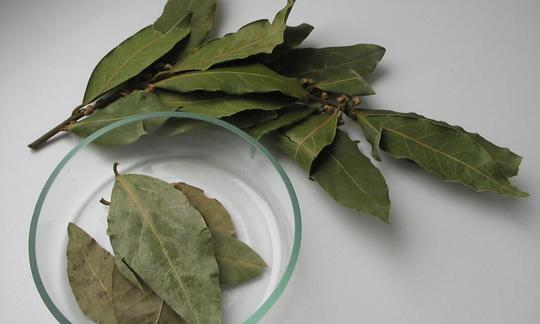

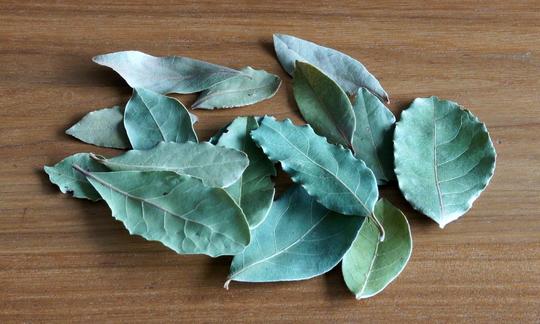

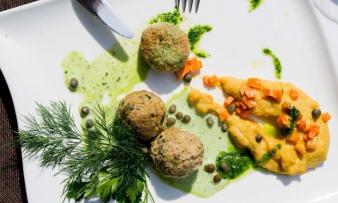
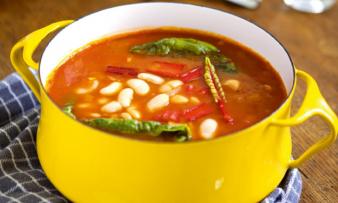






Comments